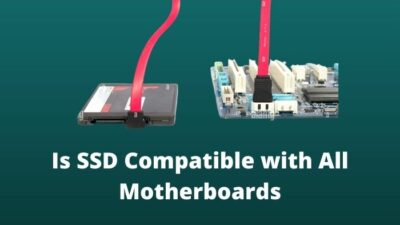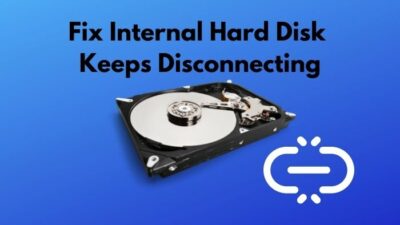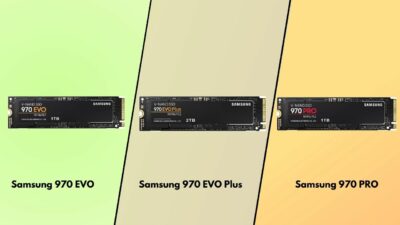Are you using an SSD to speed up your computer but don’t know how to partition it? Or have confusion on, does an SSD even Partitioned?
Don’t be frustrated. I will try to answer these questions.
I will give you a clear idea about the SSD partition and show a complete procedure for it.
Can I partition my SSD?
Before the partition, you have to understand the inside out of an SSD and how it works. So, let’s dive into the article and know every bit of facts about SSD.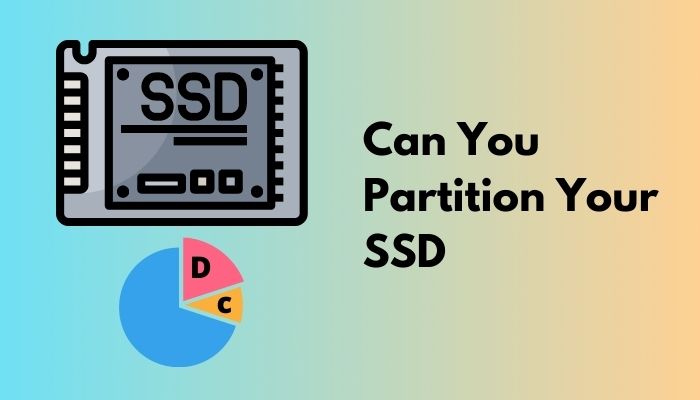
Also, check out our expert’s recommended fastest PCIE 4.0 SSDs.
What is a Solid-State Drive (SSD)?
SSD is a storage device like an HDD. But the work process of SSD is entirely different.SSD does not depend on any mechanical part for it’s data transfer. It uses NAND technology for data transfer.
The main advantage of SSD is a faster data transfer rate. Fast data transfer rate can boost up your Pc’s Speed.
There are two types of SSD:
- Serial Advanced Technology Attachment (SATA) SSD.
- Peripheral Component Interconnect Express (PCIe) SSD.
SATA SSD has two more versions. One is Mini-SATA, and the other is M.2 (the smaller version of SATA).
Along with the Versions, SATA SSD has three major revisions SATA1(reviso1.x), SATA2(revision 2. x), SATA3(Revision3.x)
M.2 SSD is now popular than the other SATA SSD for its smaller size and faster performance.
It has three interfaces. B key, M key, B & M key.
But PCIe SSD is faster than SATA SSD.
Previously SSD was used as a secondary storage device alongside the HDD. But for its faster and elegant performance, people have started to use SSD as a primary storage device.
When using your SSD as a primary storage device, you must partition your SSD.
Previously, SSD was small-sized, so it was hard to divide your drivers. But currently, SSD is available in big sizes. So you can easily partition your SSD beside your other storage device.
Follow our guide to know Can SSD Overheat.
How to Partition an SSD?
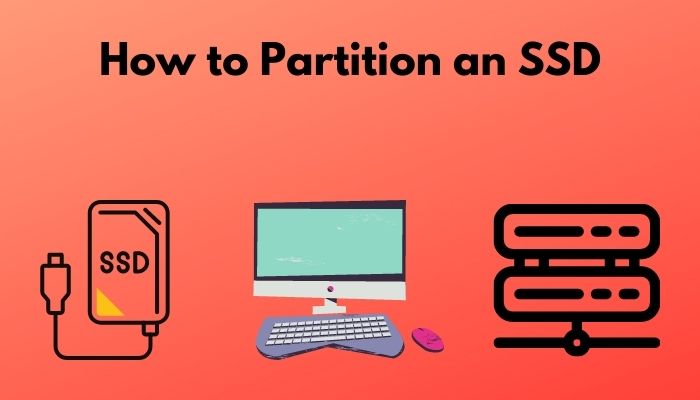
Here are some steps to partition your SSD:
1. Initialize your SSD
To partition your SSD, first, you have to initialize your SSD.for Initializing you have to follow some steps:
- Go to your ‘This PC’ folder. Then right-click on your mouse once.
- Now click the Management option.
- Find the Disk Management option and click on it.
- In Disk management Tab, not initialized disks will be shown.
- Now right-click on a not initialized Disk.
- You will find an option called Initialize disk; click on it.
- Now choose ‘MBR’ or ‘GPT’ for SSD initialize. For multiple partitions, GPT is good, and MBR is the perfect choice for initializing for two partitions.
Once you complete initializing your disks, you have to allocate your Disks to partition.
2. Allocate your SSD disks
Allocating your SSD disks is the second step to partition. You have to allocate your unallocated disk to continue the partition. Here are the steps of allocating Disks:
- Go to ThIs Pc and right-click on it
- Now find the Disk management console
- You will find adjacent unallocated space of your SSD.
- Now choose an unallocated space and select Extend Volume by right-clicking.
- An extended volume wizard will appear with the next button.
- Click the next button and your unallocated space will be allocated simply.
This the steps for allocating your Disk space. The following steps will be the final step of partitioning.
Check our latest fix article on why Can’t Install Windows 11 on SSD.
3. Partition your SSD with Disk management
This is the final method of SSD partition. Here are the steps of SSD partition by
Disk management:
- Go to This Pc folder and right-click on it.
- Now click on the Management option.
- You have to find out the Disk Management option.
- In the Disk Management tab, you will find the SSD partition option.
- Right-click on it and select the “shrink Volume” option.
- Enter a specific amount of empty space that you want to shrink for your Partition.
- Now click the shrink button.
- Back in the Disk Management tab and click on the unallocated space.
- Now select the New Simple Volume option.
- Click the Next button to add the unallocated space for the partition.
- Now add a Drive letter or link or path for Partition.
- Now set the file system as NTFS.
- Now click on the Finish button of the New Simple Volume Wizard tab.
- Wait till the partition process ends.
You will see the new partition of your SSD on your screen.
This is the Manual method of partitioning SSD.
Some tools help you partition your SSD, such as EaseUs partition master, AOMEI partition assistant, Paragon Partition Manager, Acronis Disk Director.
You can also partition your SSD with the help of these tools.
But before you start the partition of your SSD, always check the state of your SSD whether SSD is perfectly compatible for partitioning. You will find the State at Disk Management on your computer.
Check out our separate post on SSD good for Gaming.
Should You partition your SSD?
Of course, you should Partition your SSD. Because If you partition your SSD, it will be easier to Back up your Data after you restore your Operating System.
It will also help you manage personal data easily and protect your personal data from system failure.
Moreover, By partitioning your SSD, you will use System files efficiently.
So, you should partition your SSD. Previously it was tough to partition SSD because the Memory capacity of SSD was so low. Usually, an SSD is 250 GB, and OS needs full memory to run the system.
Now you will find a big-sized SSD and partition the SSD very easily.
Does partitioning SSD make it faster?
No, Partitioning SSD does not make it faster. Partitioning SSD neither increases your performance nor reduces your performance. It needs the same amount of time to read/write data and transfer it to the other PC components.
It only helps you store your data categorized, not speed up the data transfer rate.
SSD partitioning starts after SSD is used as a Primary storage device. In HDD, sometimes overall performance increases after partitioning. But for SSD, nothing will be changed after Partitioning.
Check out my new post on Is SSD Affected by Magnets.
Conclusion
The SSD is used as the primary storage device of a computer for it’s fast performance rate; you should partition your SSD for better use.
The partition will help you to manage your system and personal data appropriately.
In this post, I elaborate on SSD partition, its advantages, and the correct methods of SSD partition.
Hope this will help you partition your SSD and run your PC perfectly.

